IELTS Listening: Structure, Tips, Strategies
Listening is the first section of the IELTS test. It’s very important to start completing the test with good concentration, so you have to be very well-prepared for the first part of the test.
In this article, IELTS Game will speak about the structure of the IELTS Listening section, and the different strategies to complete the test.
Moreover, you will find several useful tips to succeed in this section.
General Information about IELTS Listening exam
The first thing you need to know is that Listening tasks are the same in both Academic and General Training IELTS.
You will have 30 minutes to listen to the recordings and extra 10 minutes to transfer your answers to the answer sheet.
In total, you will spend about 40 minutes on this section.
You will hear four different recordings and will have to answer 40 questions.
All the recordings will be played only once. It means that you will need to answer all the questions while listening and be very attentive not to miss any information.
So, the Listening part consists of four sections (one recording for one section, 10 questions in each section).
The sections become more difficult as you progress through the exam.
- In section 1, you will have a conversation between two people on some common topic (for example, you might hear someone buying tickets, or asking for information).
- Section 2 is an informal monologue (one speaker), like a guided tour, or a person giving a short talk on a topic of general interest. As you can see, the first two section are usually devoted to the issues that you’re likely to discuss while living in an English-speaking country.
- Sections 3 and 4 are more difficult, and they usually refer to some academic topics. In section 3, you will hear a dialogue between 2-4 people. It can be a group of students discussing their assignment, or a student and lecturer resolving a problem. Section 4 is a mini-lecture which could cover any topic from a typical college course.
Listening Score System in IELTS test
As I have already mentioned, there are 40 questions in the Listening test.
Each one is worth one mark. There are no ‘half marks’ even when the question asks you to give two answers. If one answer is wrong, you won’t get any points.
So, you can get 40 marks in total. Later these 40 marks are converted into the Band score. You can find the information about conversion on the official IELTS website. Here is a table of approximate marks for IELTS bands:
You may use this conversion table when you do sample tests to check what band you would get for this task.
However, you should keep in mind that each version of the IELTS can be slightly different.
Different Strategies to answer IELTS Listening exam
There are not so many listening techniques as there are, for example, reading strategies.
However, you must be aware of the course of actions for the Listening part. You’re going to hear the recordings only once, that is why you have to be as concentrated as possible not to miss the information you need.
Here’s the plan of actions that you can follow in the Listening section:
1. Analyze the questions
Before listening to the recording, you will be given time to read the questions. Make use of this time wisely.
Listen to the speaker attentively to find out what questions you should read first.
For example, the speaker says “First, you have some time to look at questions 1 to 7”. Don’t read further; there will be more time to read other questions.
So, you have to analyze every question. To do so, determine what type of question it is, and how you should answer it.
In this step, you also need to find keywords. They will help you concentrate on some specific information while listening.
2. Try to predict an answer
You must do this when you analyze the question. It doesn’t mean that you should guess the answer and write it down immediately.
You may assume what answer to expect. It is always a good idea to underline keywords.
By doing so, you may notice some useful information that will help you to make a prediction.
For example, you have the following question: The use of the (34) ….. allowed information to be passed around the world.
You can easily expect to hear a noun because there is the definite article before the missing word.
All this may seem to be too difficult to achieve in 30 or 40 seconds given for reading the tasks.
But if you practice a lot and apply these techniques before the exam, it won’t be a problem for you on the test day.
3. Listen for the keywords
In the previous steps, we talked about keywords. It’s important to find them as they make listening much easier.
You won’t be able to understand all the information while listening, and it’s not necessary at all. You must stay focused on keywords and listen to them.
Types of questions
There are many different types of questions in the Listening section. You have to be prepared to answer all of them. Let’s have a closer look at them.
1. Form Completion
Most likely, you will have this question type in Section 1 (although, you can encounter it in all other sections as well).
This question type requires you to fill out some form, such as an order form or an application.
It’s very easy to make predictions in this type of questions as there is a lot of useful information in the forms.
For example, most forms will contain information about names, address, phone number, age, work hours, etc.
2. Multiple Choice
It’s a very common type of question in the Listening section.
You will usually have three possible answers, very seldom there will be more than three choices (in this case, you can be asked to choose several answers).
When you complete multiple choice questions, keep in mind that you must write letters (A, B or C) on your answer sheet.
Don’t write words; this answer will be wrong. Look at the example of this question:
3. Short Answer Question
This question wants you to write a short answer to a question. Here, you have to be very attentive reading the directions.
Pay attention to the number of words or numbers you need to write.
Analyzing the questions before listening, try to underline keywords. This type of question usually asks you to find some detailed information, so you must be ready to listen for it.
4. Sentence Completion
In this question type, you will have to complete a sentence with a short answer. But don’t expect to hear the same sentence word-by-word, there will be synonyms and paraphrases.
Get ready for it when you read a question before listening and think of possible synonyms.
It’s a form of Short Answer Question, so don’t forget to read the instructions properly. It’s crucial to know the number of words and numbers you need to write.
5. Notes/Summary/Flow Chart/Table Completion
These tasks may seem to be different, but the way to complete them is the same. So, in these question types, you will need to fill in missing information in a flow chart, a table, notes or a summary.
It is important to check a question number and where it is located (if it’s a flow chart or a table). Also, try to figure out the keywords that surround the missing information.
5. Labelling a Diagram/Map/Plan
In these questions, you will have some visual information (e.g. a map or a diagram), and you will need to label some things on a diagram.
Usually, you will be given words for labelling.
As you can see, there are not so many keywords that you can listen for. But there are many other clues on a diagram. For example, you have some places marked on the map: Bank, Station Square, Public Gardens, Hill Road, etc.
6. Matching
And one more type of question, matching, will ask you to match some information based on what you hear.
Most likely, you will need to listen for some detailed information.
That is why you must analyze the question accurately before listening and determine the category of information you will have to find.
IELTS Listening Tips
Now you know how to deal with different types of questions in this section and how to listen for necessary information.
IELTS Game stuff would also like to give you some final tips that will be helpful during the preparation period and then on the day of the test.
1. Practice listening to different accents
IELTS is an international exam, and it means that there may be different English accents in the Listening part.
It might be challenging to understand an Australian or Canadian accent if you never heard them before.
That’s why you must get acquainted with different accents before the exam.
You may find some resources for listening on the Internet.
For example, ABC Radio for Australian accent or CBC Radio for Canadian accent.
2. Practice listening
You should also practice listening in general (not only for different accents).
Start every morning with BBC Radio or listen to it when you go to work or university. It will be useful for your listening skills and vocabulary.
Every time you hear a new word, write it down somewhere and check the definition.
3. Do many sample tests
It’s also important to do sample Listening papers. The more tests you do, the better results you will have in a real test.
Sample papers will get you acquainted with different question types.
Moreover, you will learn how to use the time before listening wisely and how to analyze the questions.
4. Practice using the answer sheet
When you do a sample paper, try several times to use the answer sheet. It’s good to be familiar with it before the exam.
Also, you may find out how much time it takes to transfer the answers to the answer sheet.
You will be given 10 minutes on it in the exam. If you learn how to do it quickly, you will save some time for checking your answers.
You can download a sample answer sheet on the official IELTS website.
5. Read the instructions carefully
It is essential to read the directions before listening even if you’ve taken 100 tests before. There will be the information about the number of words you have to write.
Remember that all words are counted.
For example, a holiday – we have two words (the article is one word). Also, you are asked to write numbers, not figures. So, 1950 is one number (but four figures).
6. Listen and write at the same time
You will hear the recording only once. That is why you will have to write and listen at the same time.
Don’t wait for the recording to stop to answer the questions, do it during the listening.
Besides, don’t write the answers on the answer sheet at once. You will have some time after listening for transferring the answers.
When you listen, write all your answers on the sheet with questions.
7. Mind spelling and grammar
You will be given points for correct answers. But answers with spelling or grammar mistakes will be wrong.
That is why you need to spend some time during your preparation on practicing correct spelling and studying grammar.
When you analyze the questions and then listen to the recordings, you have to pay particular attention to singular and plural forms.
Sometimes a question may give you a hint what form of a noun to use.
For example, There are different ______ in the museum. – you need to write a plural form.
But sometimes, it may not be clear: Asked questions about _____. – so, you have to listen attentively.
8. Be aware of changes
You should be ready for possible changes of information.
For example, when one speaker says: “Let’s meet at 1 p.m. tomorrow”, and another answers: “Okay, that’s fine … Oh, sorry! I’m busy at 1 p.m. Maybe we’ll meet at 2.30 ?”
So, don’t relax when you hear the first variant and listen to the end attentively.
9. Practice listening to groups of numbers
Very often in Section 1 there is a task to write down a telephone number.
It’ll be good if you practice writing big groups of numbers before the test, as usually the speaker says it very quickly.
You shouldn’t hope for him to repeat the number again, because sometimes he will say it only once.
10. Don’t try to understand everything
You don’t have to understand every piece of information you hear. Your aim is to answer the questions in the task.
That’s why you should find keywords and focus on them when you listen.
11. Keep calm and concentrate
My final tip is to stay calm and concentrate on listening. It’s the first part of the test, and if you start it with the right mood, you’ll keep it throughout the whole test.
Don’t stress out when you realize that you didn’t hear something. It’s not a big problem because you can afford to make some mistakes.
Just move to the next question and focus on listening.

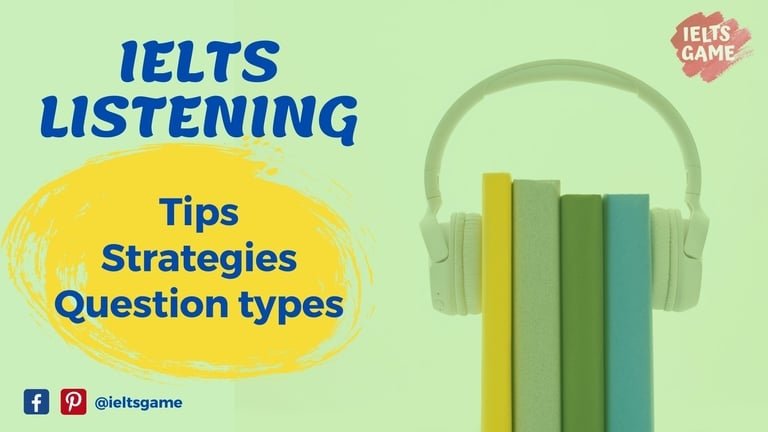
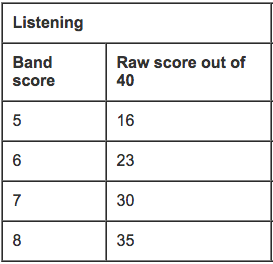
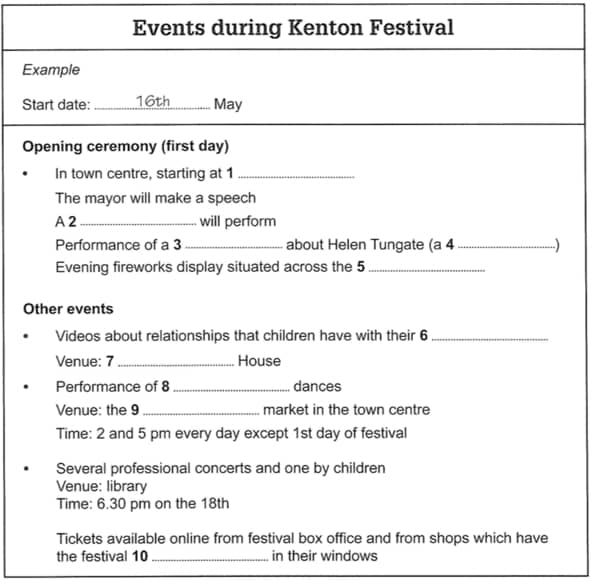
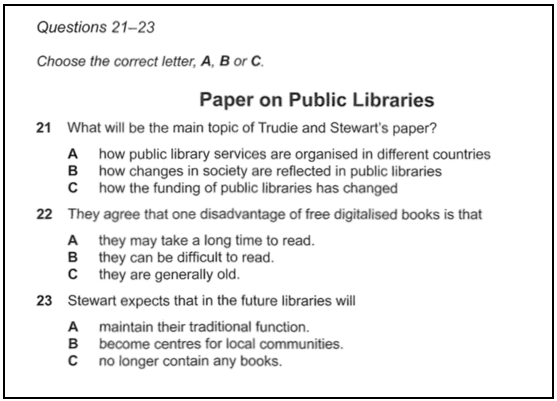
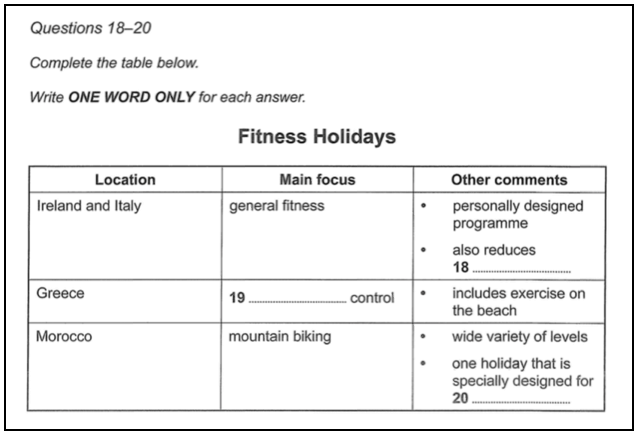
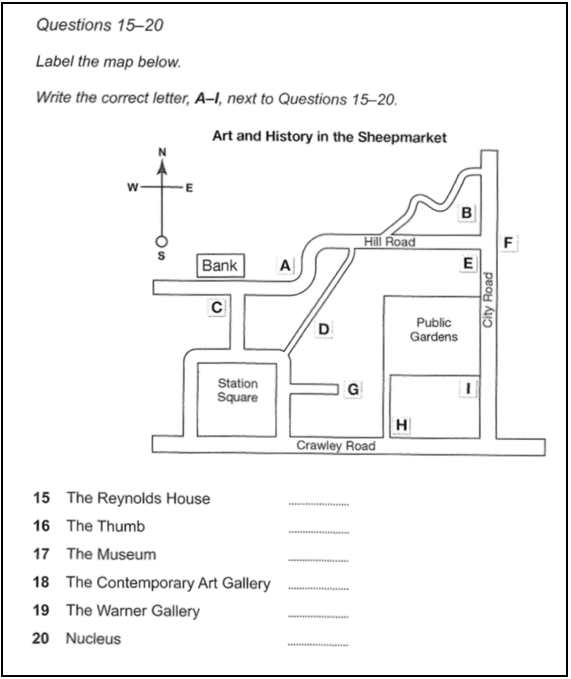
2 Comments on “IELTS Listening: Structure, Tips, Strategies (Academic & General)”
PLEASE SEND ANY TYPE OF IELTS PREPARATION MATERIAL.
Thank you.